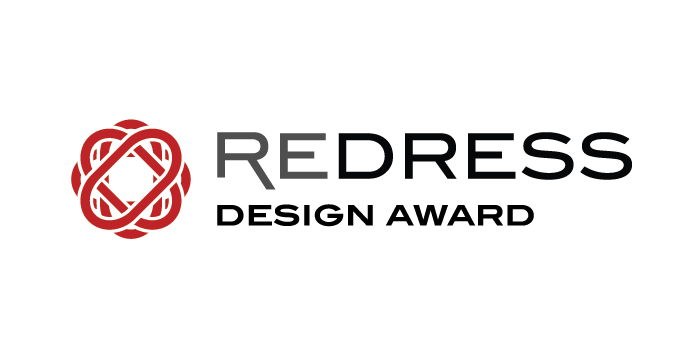Antiform
CASE STUDY
Created by Redress, 2013
Antiform
Antiform is a forward-thinking UK based fashion company with a twist. Antiform aims to push the boundaries of ethical and sustainable design by using reclaimed materials that are based on combining fashion-forward shapes with heritage craft. The brand was established by Lizzie Harrison in 2007 and is run by an experienced team of local designers, researchers, and communicators. All of their materials and production workmanship is sourced locally to their studio boutique in Leeds, UK.
In this case study, Lizzie Harrison shares her approach to sourcing textile waste for her brand Antiform.
IN CONVERSATION WITH LIZZIE HARRISON
Why is sustainable design important to you? How did you get into it?
I have always had an interest in sustainability in all aspects of my life. When I started to train as a fashion designer, I had a lot of questions about where materials came from and what happened to any waste. These constant enquiries have stayed with me as I developed as a fashion designer. I continue to look for opportunities to create fashion that not only sits with my own ethics but also challenges aspects of the industry that need to change.
Where and how do you source your textile waste?
When I started my brand, working with textile waste seemed an obvious starting point because using waste revalues waste materials, which have been cast aside yet are readily available in the UK. It also opens conversations with customers about the value of these ‘wasted’ textiles. I started sourcing waste materials many years ago. At the beginning, I spent a lot of time knocking on doors and talking to people who dealt with textile waste. After years of work, we have built a strong and diverse network of suppliers, including businesses in garment manufacturing, vintage trade, rag trade, and other related industries. We have built our network up locally, so new suppliers now approach us with their waste streams.
What is important to think about when sourcing textile waste?
It is incredibly important to think about quality and volume when you are sourcing waste materials. We always need to maintain a high quality in the fabric we source to ensure that the product will last in the wardrobe. We also need to be confident about the volumes of waste we buy, because buying is often a ‘now or never’ situation. We have to be good at deciding how much of a certain textile we will use, otherwise we will have too much fabric in our studio. The materials we source then dictate our design direction for the collection.
What do you find most challenging about sourcing textile waste? How have you overcome these difficulties in the past?
I think the most challenging aspect is to make quick and calculated decisions about what textile waste to buy. We also quite often completely run out of a certain fabric or material and have to find replacements. The way we have overcome this is by trying to position every run that we make as a limited edition, which means that different buyers will get different stock.
What do you find most inspiring about sourcing textile waste?
What I find the most inspiring is the vast range of materials we uncover. This inspires our design work and is an integral part of our design strategy. I also find it really rewarding when we manage to use up waste material that is hard to work with and design a new product out of it.
Which is your favorite design made from textile waste?
One afternoon when visiting a textile mill, I was offered some cashmere swatch samples from the technician who was about to put them in the bin. These swatches inspired the development of our colourblock scarf, which continues to sell well.
What is your best resource?
My best resource is talking to the people who actually work with textile waste because gaining their support is absolutely key to uncovering materials that we can reuse.
How has your source of waste inspired your designs?
Our source of waste is critical to our design process and directs the resulting range because we design from the waste material to the garment. The different waste materials that we source are then crafted together into a collection, which sit well together, so the original waste sourcing is critical in our creativity.
What is your top tip to sourcing textile waste?
My top tip is to look around close to home. Rather than starting with an exact idea of what you might find, be open to sourcing something unexpected.
